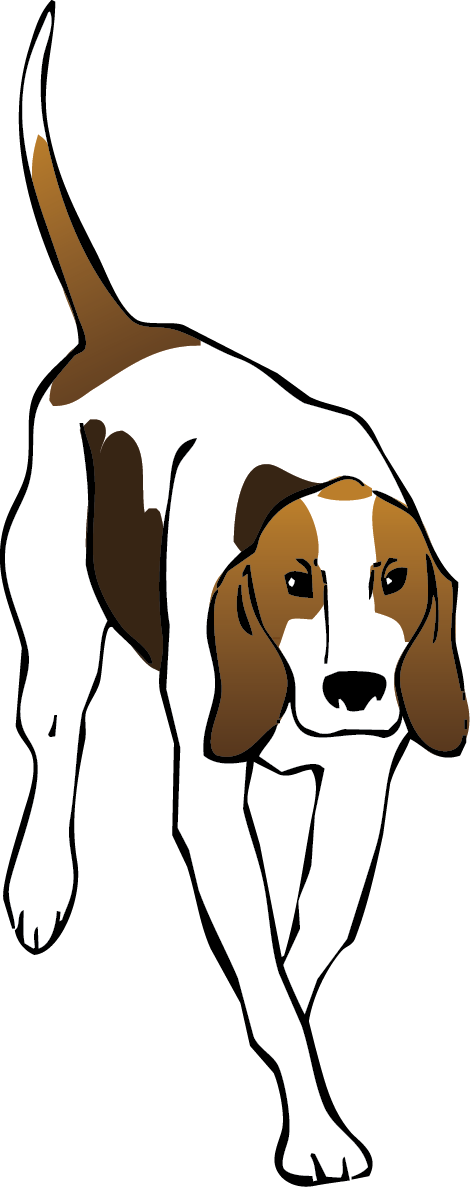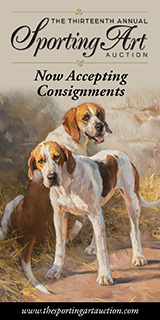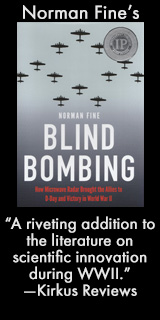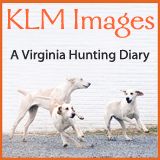War Horse
Remembering the Irish War Horse
Fascinated by our summer series of articles about the WWI war horses on the occasion of the centennial of that horrific conflict, Noel Mullins, a regular contributor to Foxhunting Life, sent us this story that he wrote for this year’s Souvenir Programme of the Dublin Horse Show. Noel is a Member of the Royal Dublin Society Library & Archives Committee. His story is about Gladeye, a field hunter that went to war, survived, and returned to jump at the Dublin Horse Show in 1926.
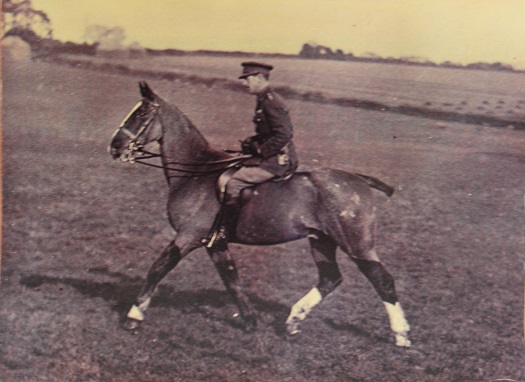 War Horse Gladeye and Brigadier Walter Brooke
War Horse Gladeye and Brigadier Walter Brooke
This year marks the centenary of World War I, and ceremonies around the world remember the nine million human casualties lost in the conflict. But it is often forgotten that eight million War Horses also lost their lives, going through the most terrifying experiences known to any living creature. War was declared on the July 28, 1914 and was expected to end by Christmas 1914, but sadly it lasted another four years until November 11, 1918.
Probably the two most well known Irish War Horses in history were Emperor Napoleon’s white horse Marengo and the Duke of Wellington’s Copenhagen who met at the Battle of Waterloo. Both are said to have been purchased at an Irish horse fair. War Horses in the mounted cavalry units were deployed in many battles in the first years of WWI, amongst them, the battles of Mons, First and Second Battles of Ypres, Festubert, Aubers Ridge, Marne, Vimy Ridge, the Somme Hill, and Cambrai.
Mr. Mellon’s Tribute to the War Horse
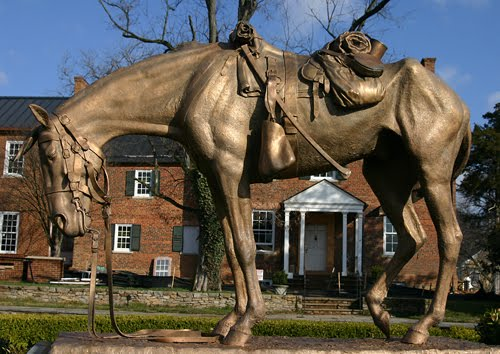
Appalled as we are by the human death and casualty figures resulting from the Civil War, less known is the fact that well over a million horses died in service during that conflict. Many of those horses, belonging to officers and cavalrymen of both sides, must have carried their riders after foxhounds in happier days.
The late Paul Mellon believed that these animals deserved to be remembered, and he determined to create an authentic memorial for them. The result, a product of artistic genius coupled with painstaking research, is an exceedingly moving piece of sculpture. Any foxhunter or horse lover will be well-rewarded by a visit to the National Sporting Library and Museum in Middleburg, Virginia or to the U.S. Cavaly Museum at Fort Riley, Kansas to see either of the two castings from the original mold. (-Ed.)
The sculpture of the war-weary Civil War horse in the courtyard of the National Sporting Library had its origin in the mind of the late Paul Mellon.
In 1994 Mr. Mellon received a book for his eighty-seventh birthday titled The Cavalry Battles of Aldie, Middleburg and Upperville, June 10-27, 1863 by Robert F. O'Neill, Jr. O'Neill had conducted an enormous amount of research through books and newspapers of the period and letters and diaries of the participants that vividly brings those seventeen days to life. Reading of battles and bloodshed of human and horse right in this community had a profound effect on Mellon.
War Horse
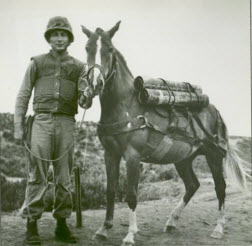 Lt. Eric Pedersen and RecklessMany of us recall the rave reviews that followed the London opening of the blockbuster play—now a movie—War Horse. As everyone drawing breath knows, the fictional story is about a boy who loses his horse—with which he has an uncommon bond—to the battlefields of World War I.
Lt. Eric Pedersen and RecklessMany of us recall the rave reviews that followed the London opening of the blockbuster play—now a movie—War Horse. As everyone drawing breath knows, the fictional story is about a boy who loses his horse—with which he has an uncommon bond—to the battlefields of World War I.
A friend, Herb Jonkers, just pointed me to the story of a real life war horse named Reckless, who was separated from her youthful owner during the Korean War and became one of the Marine Corps’ greatest heroes. In 1997, when Life Magazine published a special Collectors Edition titled “Celebrating Our Heroes,” the story of Reckless was included alongside the stories of other heroes such as George Washington, Thomas Jefferson, Abraham Lincoln, Martin Luther King, and Mother Teresa.
